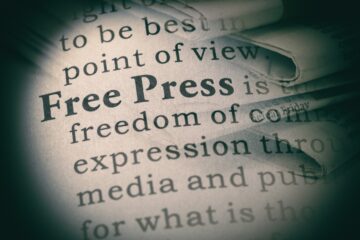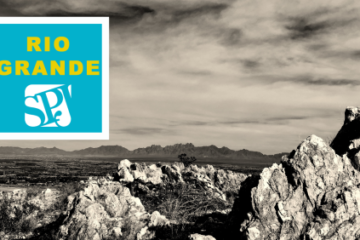As the people who make a living asking questions, reporters get their fair share in return.
Some aren’t so fun.
“Just who do you think you are?”
Others are a bit on the wonkish side.
“What the heck is a prescriptive easement?”
Believe it or not, if we can answer a question, we will. So it is in that spirit that the Society of Professional Journalists Rio Grande Chapter board members have taken on a project. For the remainder of the year, each member will take a turn answering a question they’ve been asked during their career or explaining something about this job we hope will be of benefit to community members.
Like any other profession, journalists do things the way they do for a variety of reasons, many of which aren’t obvious to outside observers.
We hope the coming columns shed some light on how and why we do our job, and we hope it emboldens you to have conversations with the journalists in your community.
In 2019, bail reform and the “revolving door” of criminals was a heated topic. An enterprising lieutenant with a local police department decided to bring together all the players in a public forum, let them explain the rules and let the public ask questions.
The panel consisted of local law enforcement, prosecutors, defense attorneys, local magistrates and a couple of state representatives. It was a solid cross-section of the judicial system.
The very first question asked – I kid you not – was, “Why does the media use pictures of these criminals and glorify what they do?” The entire panel stared at me, which is what I get for sitting in the front. I stood up and answered.
We don’t do anything, whether it’s printing a picture or writing an article that glorifies crime at my paper. Unfortunately, crime is part of every community and it is often newsworthy.
So, why do we use pictures of people charged with crimes? After all, they’re innocent until proven guilty, right? We don’t do it to be jerks or to shame people. The biggest reason is rather cliched – they’re worth a thousand words.
When most people see the front page of a newspaper, they skim. That’s why the headlines are big, so you can get the gist of the article, like “Person charged with horrible crime.”
That got your attention, so now you start to wonder, “Do I know this person?” You spot a picture with a name underneath. “Nope, don’t know them” or “Huh, always thought my neighbor was a bit off.”
Having a picture also gives people visual verification that the person charged with the horrible crime who just so happens to have the same name as their dear relative is not, in fact, their dear relative.
For example, I know three different people with the same name, about the same age, who live in the same community. One of them is a very well known former state elected official. The other two are business owners that are fairly well known. There are also dozens of people in my county with that rather common name.
Yes, if the person charged was the very well known former politician, we’d report that in the story and probably work it into the headline, but if there’s a picture, you know right away who we’re talking about. Or who we’re not talking about.
It often feels like, as a reporter, members of the public think we’re unaware of the ramifications of what we do. That we have no idea that reporting someone has been charged with a crime – whether it’s a violent felony or a white collar misdemeanor – will have consequences not only for the person charged but for their family and possibly even their social group.
Reporters and editors in newsrooms across the country have discussions about these things frequently. Should we use the booking photo? Do we have an old file photo of them? Maybe hunt something down on Facebook? Honestly, it feels like a lot of times there isn’t a good answer.
We typically use the booking photo because it’s recent and accurate to the situation. Someone has been charged with a crime, booked into a detention center and had their picture taken in a jail jumpsuit. That’s the truth. That’s reality.
I personally struggle with the idea that we have cast a judgment on this person. They look like a “criminal” so they must be guilty, right? No, not at all. One of the most important things reporters can do is, after the hype of the arrest has faded, after the shock has rippled through the community, is to keep covering the case. Cover it to the very end.
Go to the status conferences. Check the files for updates and motions. Sit through the sentencing. Report what’s happening, not just for the benefit of the victim but for the accused as well.
Our judicial system, for all its failings, does not operate in the dark. Reporters aren’t part of the system but we are adjacent.
I remember going to the scene of a double shooting years ago. As I waited for a statement from investigators, I took pictures. One of the shots I took was of a body bag on a gurney. We ran the picture and people were incensed.
“How could you? That’s someones family member in there.”
Yes, it is and that is the reality of what happens when violence is committed in your community. It is hard and tragic and painful to take those photos and to use them, as well as the booking photos of those often bewildered individuals who are watching their lives irrevocably change.
So no, we do not run pictures of “criminals” to glorify what they do. We run pictures of your neighbors, your family, your community members to document the truth and show you reality.


